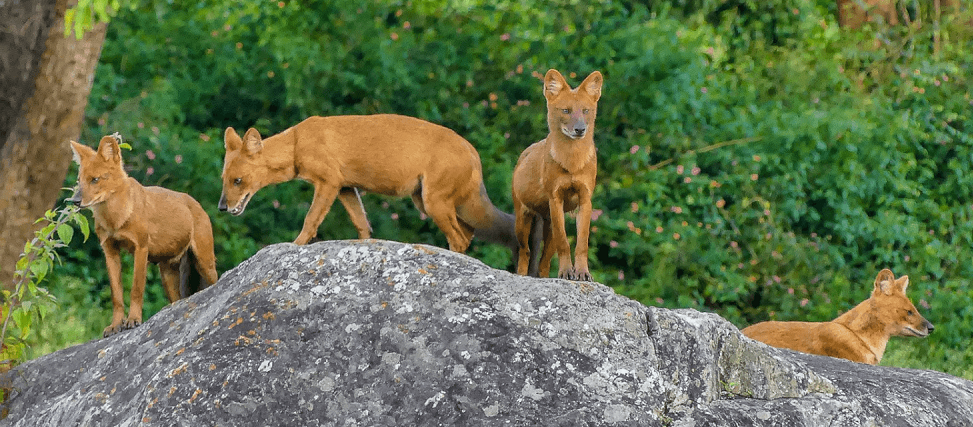Madhya Pradesh, known as the "Heart of India," is a treasure box of history, culture, and natural beauty, offering an incredible range of experiences for travellers with varied interests. This central Indian state is home to an array of iconic destinations - from ancient temples and UNESCO World Heritage Sites to vibrant wildlife reserves and stunning natural landscapes. For history enthusiasts, Madhya Pradesh offers architectural wonders like Khajuraho’s intricately carved temples and the majestic forts of Gwalior, each narrating tales from India’s past. Wildlife lovers can explore renowned tiger reserves such as Kanha and Bandhavgarh, where sightings of Bengal tigers and other wildlife are common. Meanwhile, the rock shelters of Bhimbetka take visitors back to prehistoric times with their ancient cave paintings, offering a rare glimpse into early human civilization. Whether you seek history, spirituality, adventure, or wildlife, Madhya Pradesh’s top attractions present a unique and immersive experience of India’s diverse heritage and natural splendour, making the entire state an unforgettable travel destination.
Include these 6 Destinations in Your Travel List
1. Khajuraho - Khajuraho, a UNESCO World Heritage site in Madhya Pradesh, is one of the state’s most renowned destinations, celebrated worldwide for its ancient temples. Constructed during the reign of the Chandela dynasty, these temples showcase distinctive architectural styles, famous for their intricate designs and the erotic carvings on certain temples. Originally, Khajuraho housed around 83 temples built over a century, from 950 AD to 1050 AD, though only 22 have withstood the passage of time. This site proves to be a marvellous exemplification of the architectural genius and cultural richness of medieval India, making it an essential visit for anyone exploring Madhya Pradesh.
2. Jabalpur - Nestled along the Narmada River, Jabalpur is a prominent destination in Madhya Pradesh, previously known as Jubbulpore. The marble rock formations at Bhedaghat along the Narmada River are among Jabalpur’s top highlights and a must-visit for anyone exploring the region. The city boasts a unique blend of natural wonders and historical landmarks, creating an atmosphere that feels almost surreal. Visitors can experience a variety of attractions, including the Dhuandhar Falls, Madan Mahal Fort, Balancing Rocks, Bargi Dam, Chausath Yogini Temple, Lord Shiva Statue, and Sangram Sagar Lake.
3. Bandhavgarh National Park - Madhya Pradesh, with its diverse landscapes and rich biodiversity, is a top international destination for wildlife safaris in India. Bandhavgarh National Park stands out as a major attraction and one of India’s most renowned parks. Bandhavgarh boasts the highest density of tigers among all Indian parks, making it ideal for spotting these majestic animals. Nestled between the Vindhya cliffs and woodlands, the forest supports a variety of wildlife, including species like Nilgai, wild boar, foxes, and jackals, along with numerous bird species.
The best months to visit are from October to the cooler months, while April and May offer optimal tiger sighting opportunities. Besides wildlife, the jeep safari in Bandhavgarh also covers historical and cultural sites, including Bandhavgarh Fort, Sesh Shaiya, Badi Gufa, Three Cave Point, and Jwalamukhi Temple.
4. Gwalior - Gwalior is famed for its impressive forts, grand palaces, and rich historical heritage. Known as the birthplace of the legendary musician Tansen, Gwalior celebrates its cultural legacy through the Tansen Music Festival, where artists from across the nation perform near his tomb in homage. This city is a treasure trove for history enthusiasts, with the iconic Gwalior Fort standing proudly on a hilltop as a testament to the city’s royal past. Visitors can explore remarkable attractions such as the hilltop Gwalior Fort, the unique Teli ka Mandir, and the beautifully designed Man Singh Palace. Other sites include the Tigra Dam, Tansen’s Tomb, Gopachal Parvat, and the intricately sculpted Sasbahu Temples.
5. Sanchi - Sanchi holds significant spiritual importance for Buddhists and draws numerous pilgrims due to its collection of ancient Buddhist monuments. The primary attraction is the renowned Sanchi Stupa, a UNESCO World Heritage Site and the oldest stone structure in India, established by Emperor Ashoka in the 3rd century BCE. The Stupa’s gateways, or Toranas, are intricately carved, each symbolizing virtues such as love, peace, courage, and trust. In addition to the Sanchi Stupa, visitors can explore other historical treasures, including the Udayagiri Caves, Gupta Temple, Buddhist Viharas, the Great Bowl, the Eastern Gateway, and the Ashoka Pillar, each adding to Sanchi’s rich cultural and spiritual appeal.
6. Ujjain - Ujjain, an ancient city in the Malwa region, is one of India’s holiest pilgrimage sites. Nestled along the banks of the Kshipra River, Ujjain is known as the “temple city” for its abundance of temples from various historical periods, including the Mahakaleshwar Temple, one of the 12 revered Jyotirlingas and a must-see for visitors. Other notable attractions include the Kal Bhairava Temple, Ram Ghat, Harsiddhi Temple, Kalideh Palace, Pir Matsyendranath, Jantar Mantar, Bhartrihari Caves, ISKCON Temple, and Bade Ganeshji Ka Mandir. As one of the top destinations in Madhya Pradesh, Ujjain also holds special significance as one of the four sacred locations for the Kumbh Mela, one of the world’s largest religious gatherings, held every 12 years.

